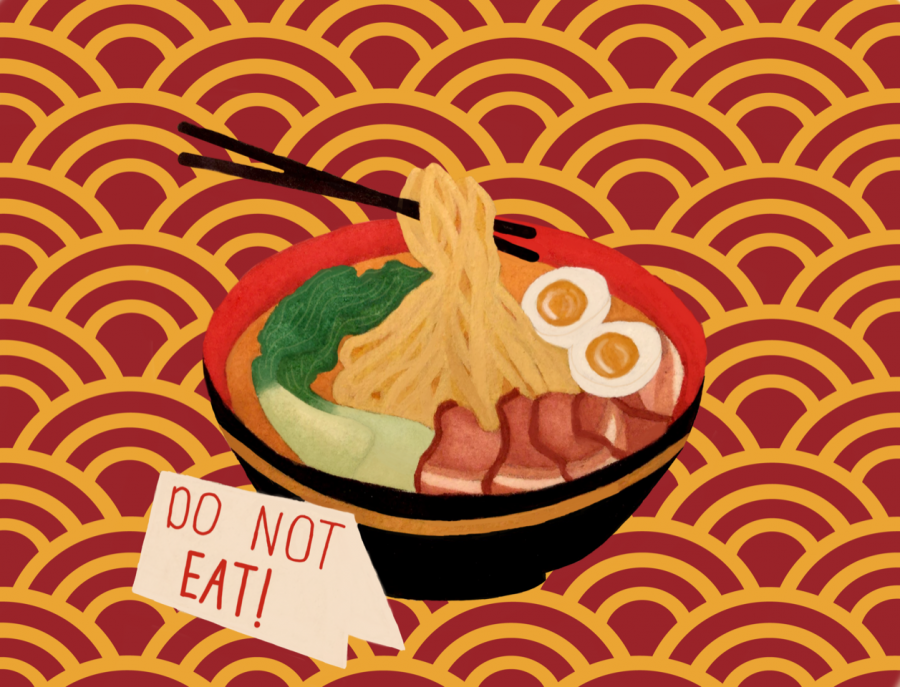How Fake Food Is Created
February 15, 2019
If you’ve ever found yourself in front of the display window of a Japanese restaurant, chances are that you’ve stumbled upon an assortment of fake foods. From sweet treats like ice cream and donuts to savory snacks like steak or fish, fake foods are used in situations where real food can’t be used. For instance, when movies or TV shows require something frozen to melt between takes, it’s easier to switch out props rather than waiting for real food to slowly melt. But how are these food stand-ins created in the first place? According to independent fake food artists Lisa Friedman and Brenda Chapman, who each specialize in making realistic food props for restaurants, trade shows, and movies, a variety of standard, but unexpected materials are used.
But first, let’s get to know a little more about the history of fake foods. Dating back to the time when the Pharaohs of Egypt existed, pharaohs or kings were often buried with everything they needed for their journey to the afterlife. Food items, especially meat and poultry, were preserved using salt and bandages in order to lay alongside a mummy in its tomb. When the modern era came around, the world began to see more of fake foods. During the early Shōwa period, which followed suit after Japan’s surrender ending World War II, Americans and Europeans traveled to Japan to aid them in their rebuilding efforts. However, these travelers found it difficult to read Japanese menus, resulting in Japanese artisans creating food replicas for restaurants. This allowed foreigners to easily order a menu item that looked appealing to them.
When movies or TV shows require large sets of food props, they contact companies like Independent Studio Services and Display Fake Foods, who offer pre-made food props in bulk. But often times, the media will need items specifically made for certain scenes. That’s when they contact independent food artists like Friedman and Chapman. In the show Glee, Chapman was asked to create ice cream for a diner scene. “In their diner scene, they wanted milkshakes and hot fudge sundaes and banana splits that were new, half-eaten, quarter-eaten so that they could switch them out during the takes,” said Chapman. Sometimes, you won’t always know where your food will end up! One of Chapman’s items had even ended up in the Muppets: “When Miss Piggy eats doughnuts, I didn’t realize they had bought my doughnuts.”
Although the details may vary based on the food artist, the process of creating a food prop is pretty standard. In Friedman’s case, the customer will usually send a real version of the item they want to be duplicated after submitting the order. She will then produce a mold of the item to get the exact size and shape of it. Both Friedman and Chapman “try to mold it close to the color, so that [they’re] not starting with a blank white canvas.” Most fake foods are made out of rubber or foam, making it easy to pour the material into molds and let them set. Since foam rises like actual dough, Friedman uses a wooden board with a hole punctured through it to push out any excess material. After taking the fake food out of the mold, she will then sand the excess pieces down. Once the item is fully dry, it will be hand painted and detailed to look like real food. Chapman goes more into depth and explained that “you just kind of have to look at things a little differently, and think, it’s not made for this but it does look like this. [Friedman and I] use a lot of styrofoam, a lot of stuff from the local hardware store, you know, caulking, and drywall patching, and sheetrock mud.” To replicate things like granola and ground beef, Friedman will use crushed up cork board. “Cork is kind of breaks up like granola,” explained Friedman, “so we took some cork boards and we started breaking it down.” But sometimes, real food is used. For smaller items like popcorn, cereal, or candy, fake food artists use resin to preserve them.
When it comes to her job, Friedman said that she doesn’t “do [it] for the money. It’s more for the accolades, when [her] customers write, ‘Oh, I love it, it came out great.’” When a prop is completed, it’s hard to tell the difference from real food. While these items might just make your mouth water, watch out—they’re only a feast for your eyes.

